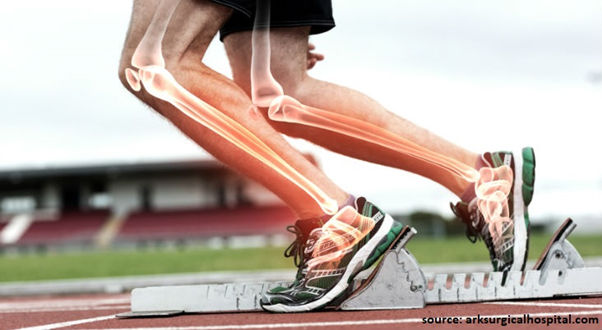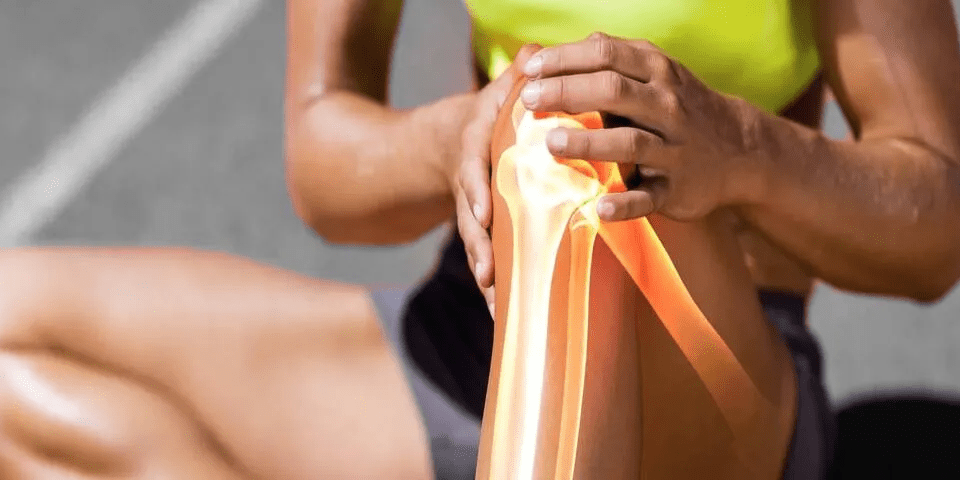Sports injuries are injuries that occur when engaging in sports or exercise. Sports injuries can occur due to overtraining, lack of conditioning, and improper form or technique. Failing to warm-up increases the risk of sports injuries. Bruises, strains, sprains, tears, and broken bones can result from sports injuries.
Sports injuries are prevalent among the people of Bhubaneshwar. They range from mild to moderate and if there is some damage, you can treat it with at-home remedies.
However, you should expect that some sports injuries may require medical treatment and take months to heal. If a sprain or strain is severe and the entire muscle, tendon, or ligament is torn away, surgery may be needed.
The only way to treat some sports injuries is by visiting an orthopedic doctor in Bhubaneswar.In this article, we will discuss some specific tips for treating each of the most common sports injuries:

1 . Ankle sprain
What it is:
Most athletes experience a sprained ankle, which usually occurs when the foot turns inward. The turning stretches or tears the ligaments outside the ankle, which are comparatively weak.
What you can do:
With an ankle sprain, it is important to exercise. It would prevent loss of strength and flexibility and re-injury. You can consult your orthopedic or physical therapist to learn what types of exercise you should do.
When to see a doctor:
It is important that you note where the sprain has occurred. A high ankle sprain heals slowly and should be seen by a specialist to ensure the lower leg bones did not separate. One way you can recognize a high ankle sprain is that this sprain causes tenderness above the ankle.
2. Groin pull
What it is:
Pushing off in a side motion leads to a strain of the inner thigh muscles or groin. Soccer, hockey, football, and baseball are common sports with groin injuries.
What you can do:
Ice, compression, and rest can heal most groin injuries. However, if you return to full activity too quickly, it can aggravate a groin pull or turn it into a long-term problem.
When to see a doctor:
If you have a groin pull with significant swelling, you should visit a doctor immediately.
3. Hamstring strain
What it is:
Hamstring are three muscles at the back of your thigh. The hamstrings are over-stretched by movements like hurdling kicking the leg out sharply when you run. Falling forward while water skiing is another cause of hamstring strain.
What you can do:
Hamstring injuries heal slowly due to the constant stress applied to the injured tissue from walking. Complete healing can take about 6 to 12 months. Hamstring re-injuries are common because it is hard for people to stay inactive for so long.
4. Shin splints
What it is:
Shin splints are pains in the front of the lower legs. They are usually caused by running or when you start a more strenuous training program.
What you can do:
Ice and over-the-counter (OTC) pain medication are the main areas of the treatment.
When to see a doctor:
The pain of shin splints is rarely a stress fracture — a small break in the shin bone. However, you should see your orthopedic doctor in Bhubaneshwar if the pain continues, even after rest. Stress fractures need prolonged rest, usually a month or more, to heal.
5. Knee injury: ACL strain or tear
What it is:
Anterior cruciate ligament (ACL) attaches the leg bone to the knee. Sudden stops or getting hit from the side can tear or strain the ACL. A complete tear can create the dreaded “pop” sound.
When to see a doctor:
You must always visit your specialist if you suspect an ACL injury. ACL tears are the most severe of all sports injuries. A completely torn ACL will require surgery if you want to remain physically active.
Every workout or exercise must start with a warm-up to prevent sports injuries. Performing warm-up exercises increase blood flow to the muscles, makes you more flexible, and decrease injuries.
- Overuse injuries are usual and preventable. Do not come out and hit the ball for an hour after not playing for a long time. Whether it is running, hiking, or team sports, start with some “pre-participation training” first by working for the required muscle groups in the weeks before doing the activity.
- It would help if you learned to recognize when you have already exhausted yourself. Stop when you feel fatigued. Muscle fatigue disables all your protective mechanisms and increases your risk of injuries. Remember, you can always come to play again next weekend — if you do not get injured today.
- Sometimes, preventing sports injuries is not in our control, but sports injuries can be prevented. Some injuries occur because your body is not ready for the activity. So, you must work out daily and get double benefits. Enjoy your weekend activities and gather the health benefits.
To avoid sports injuries, take the following precautions:
- Allow yourself to relax.
- Slowly resume your normal routine.

